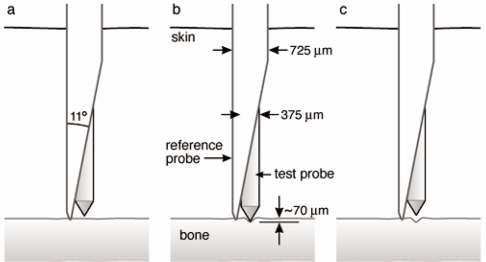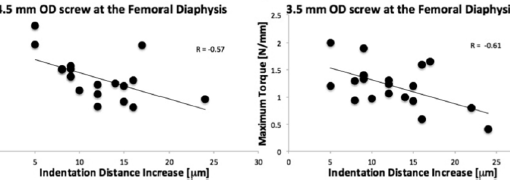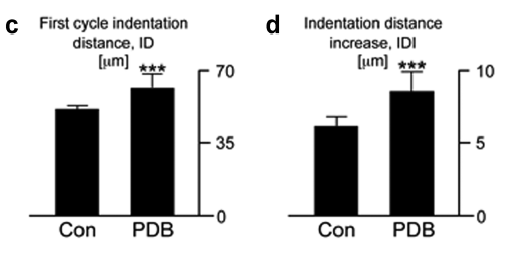Abstract
Anti-resorptive and anabolic agents are often prescribed for the treatment of osteoporosis continuously or sequentially for many years. However their impact on cortical bone quality and bone strength is not clear.
Methods
Six-month old female rats were either sham operated or ovariectomized (OVX). OVX rats were left untreated for two months and then were treated with vehicle (Veh), hPTH (1-34) (PTH), alendronate (Aln), or raloxifene (Ral) sequentially for three month intervals, for a total of three periods. Mid-tibial cortical bone architecture, mass, mineralization, and strength were measured on necropsy samples obtained after each period. Bone indentation properties were measured on proximal femur necropsy samples.
Results
Eight or more months of estrogen deficiency in rats resulted in decreased cortical bone area and thickness. Treatment with PTH for 3 months caused the deposition of endocortical lamellar bone that increased cortical bone area, thickness, and strength. These improvements were lost when PTH was withdrawn without followup treatment, but were maintained for the maximum times tested, six months with Ral and three months with Aln. Pre-treatment with anti-resorptives was also somewhat successful in ultimately preserving the additional endocortical lamellar bone formed under PTH treatment. These treatments did not affect bone indentation properties.
Summary
Sequential therapy that involved both PTH and anti-resorptive agents was required to achieve lasting improvements in cortical area, thickness, and strength in OVX rats. Anti-resorptive therapy, either prior to or following PTH, was required to preserve gains attributable to an anabolic agent.




